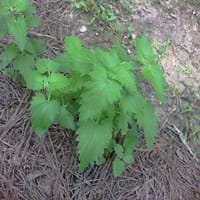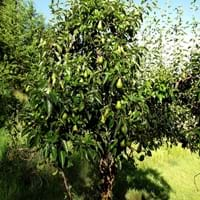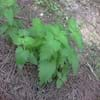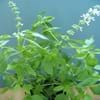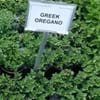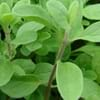Life Span
Perennial
Perennial
Origin
Europe, Asia
Europe, Western Asia
Types
Not Available
Green Anjou, Red Anjou, Bartlett
Number of Varieties
Not Available
Habitat
Dry areas, Roadsides, stream banks, Stream side, Waste areas
Humid climates, moist forests
USDA Hardiness Zone
3-7
3-8
Sunset Zone
1a, 1b, 2a, 2b, 3a, 3b, 4, 5, 6, 7, 8, 9, 10, 11, 12, 13, 14, 15, 16, 17, 18, 19, 20, 21, 22, 23, 24
2a, 2b, 3a, 3b, 4, 5, 6, 7, 8, 9, 14, 15, 16, 17, 18
Habit
Clump-Forming
Oval or Rounded
Flower Color
White, Lavender
White
Flower Color Modifier
Bicolor
Not Available
Fruit Color
Sandy Brown
White, Yellow, Red, Green, Yellow green
Leaf Color in Spring
Gray Green, Gray
Light Pink, Red, Green, Light Green
Leaf Color in Summer
Gray Green, Gray
Dark Green
Leaf Color in Fall
Gray Green, Gray
Purple, Dark Green, Burgundy
Leaf Color in Winter
Light Green
Light Green
Leaf Shape
Arrowhead
Oval with a pointed tip and fine teeth along their edges
Plant Season
Spring, Summer, Fall
Early Spring, Winter
Sunlight
Full Sun, Partial Sun
Full Sun
Type of Soil
Clay, Loam, Sand
Loamy, Sandy
The pH of Soil
Acidic, Neutral, Alkaline
Acidic
Soil Drainage
Well drained
Well drained
Bloom Time
Summer, Late Summer, Early Fall
Fall, Summer
Tolerances
Drought, Dry soil
Drought
Where to Plant?
Container, Ground
Ground
How to Plant?
Seedlings
Grafting, Seedlings
Plant Maintenance
Low
Low
Watering Requirements
Do Not over Water, Never Over-water, Requires regular watering, Water when soil is dry
Medium, Water less during winter, Water more in summer, when new, water every week
In Summer
Lots of watering
Lots of watering
In Spring
Moderate
Moderate
In Winter
Average Water
Average Water
Soil pH
Acidic, Neutral, Alkaline
Not Available
Soil Type
Clay, Loam, Sand
Not Available
Soil Drainage Capacity
Well drained
Not Available
Sun Exposure
Full Sun, Partial Sun
Full Sun, Partial Sun
Pruning
Prune if you want to improve plant shape, Prune in spring, Remove damaged leaves, Remove dead leaves
Remove damaged leaves, Remove dead branches, Remove dead leaves
Fertilizers
fertilize every 2-3 weeks while growing, fertilize in growing season
Ammonium Nitrate, Fertilize the soil before planting
Pests and Diseases
Caterpillars, Leaf Hoppers, Nematodes, Spider mites
Red blotch
Plant Tolerance
Drought, Frost
Drought
Flower Petal Number
Single
Single
Fragrant Bark/Stem
Yes
No
Foliage Texture
Medium
Medium
Foliage Sheen
Matte
Glossy
Attracts
Flying insects, Insects, Spider Mites
Aphids, Birds, Butterflies, Pear psylla
Allergy
Avoid during Pregnancy, Headache, Stomach pain, Vomiting
Anaphylaxis, Digestive Problems, Itchiness, Swelling
Aesthetic Uses
Beautification, Landscape Designing, Showy Purposes
Cottage Garden
Beauty Benefits
Not Available
Good for skin, Improve skin tone, Making cosmetics, Moisturizing, Skin Problems
Environmental Uses
Air purification
Air purification, Shadow Tree
Medicinal Uses
Arthritis, Cold, constipation, Fever, Insomia, Migraines, Upset stomach
Cancer, Cardiovascular problems, cholesterol-lowering, Detox, Diabetes, Energy, Fiber, Heart problems, High blood pressure, Obesity, Treating diverticulosis, Weight loss
Part of Plant Used
Whole plant
Bark, Fruits, Leaves
Other Uses
Air freshner, Decoration Purposes, Employed in herbal medicine, Making Perfumes, Making Shampoo, Making Sweet Scented Oil, Medicinal oil, Used as Ornamental plant, Used for its medicinal properties
Used As Food
Used As Indoor Plant
Yes
No
Used As Outdoor Plant
Yes
Yes
Garden Design
Container, Herb / Vegetable, Mixed Border
Not Available
Botanical Name
NEPETA cataria
PYRUS communis
Common Name
Cat Nip, Catnip
Pear
In German
Katzenminze
Birne
In Greek
Είδος δυόσμου
Αχλάδι
In Portuguese
catnip
Pera
In Polish
Kocimiętka
Gruszka
Phylum
Magnoliophyta
Vascular plant
Class
Magnoliopsida
Magnoliopsida
Family
Lamiaceae
Rosaceae
Clade
Angiosperms, Asterids, Eudicots
Angiosperms, Eudicots, Rosids
Subfamily
Nepetoideae
Amygdaloideae
Season and Care of Catnip and Pear
Season and care of Catnip and Pear is important to know. While considering everything about Catnip and Pear Care, growing season is an essential factor. Catnip season is Spring, Summer and Fall and Pear season is Spring, Summer and Fall. The type of soil for Catnip is Clay, Loam, Sand and for Pear is Loamy, Sandy while the PH of soil for Catnip is Acidic, Neutral, Alkaline and for Pear is Acidic.
Catnip and Pear Physical Information
Catnip and Pear physical information is very important for comparison. Catnip height is 980.00 cm and width 60.00 cm whereas Pear height is 1,219.20 cm and width 800.00 cm. The color specification of Catnip and Pear are as follows:
Care of Catnip and Pear
Care of Catnip and Pear include pruning, fertilizers, watering etc. Catnip pruning is done Prune if you want to improve plant shape, Prune in spring, Remove damaged leaves and Remove dead leaves and Pear pruning is done Remove damaged leaves, Remove dead branches and Remove dead leaves. In summer Catnip needs Lots of watering and in winter, it needs Average Water. Whereas, in summer Pear needs Lots of watering and in winter, it needs Average Water.
